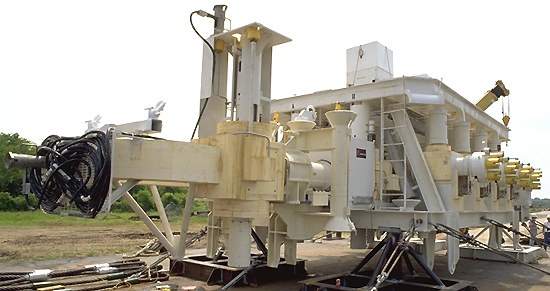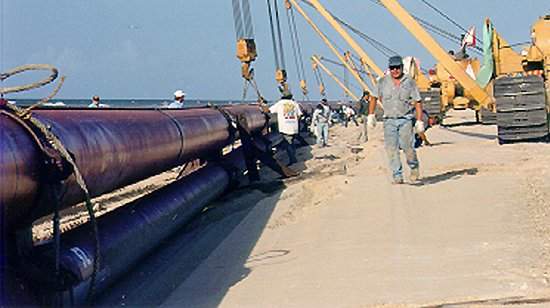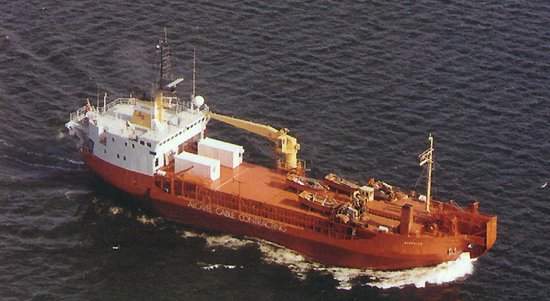The Troika oilfield is located 150mi offshore Louisiana in the Gulf of Mexico, in Green Canyon block 244.
Development
Troika was developed using a compact eight-slot subsea manifold, tied back to Shell’s Bullwinkle platform 14mi away on Green Canyon block 65 in 1350ft of water.
This required the longest multi-phase subsea tie-back system in the Gulf of Mexico.
Drilling
Troika was initially developed using five wells, positioned 50ft to 110ft from the central manifold. The Troika wells feature gravel-pack completions with frac-packs for sand control.
Permanent downhole meters are installed in each well to provide pressure, temperature, flow-rate and water-cut measurements.
Subsea trees
Troika’s subsea trees are conventional, non-TFL, 10,000psi, dual-bore 4in x 2in configurations, installed using guidelines.
Each tree features a single-production master valve, while the production-wing valve is designated as the primary underwater safety valve (USV). ROV overrides are provided on all remotely-actuated valves.
Jumpers
Thermally insulated jumpers are used to connect the individual trees to the subsea manifold. Each jumper is rigid, although normal bends accommodate thermal expansion.
Electrical connections from the manifold to the tree are made by means of flying leads, connected with the aid of an ROV.
Template / manifold
The Troika template / manifold system measures 45ft-long by 31ft-wide and reaches a maximum height of 26ft above the seafloor.
This small size permitted its installation using just a supply boat and the drilling rig.
The template weighs approximately 95,000lb and provides support to the manifold and the jumpers, flowlines and trees.
Designed to accommodate eight wells, it is extendable to accommodate a possible second manifold system connection.
Flowlines
Two 10in-diameter production flowlines connect the Troika subsea manifold to the Bullwinkle platform.
These flowlines are insulated to minimise paraffin deposition and to provide reaction time for hydrate prevention, following an unplanned shut-in.
The flowlines were constructed with a bundled cross-section, featuring a 10in production pipe, encased in an open-cell foam and near-centralised in a 24in carrier pipe. The design heat-transfer coefficient for the assembly is 0.176BTU/hr/ft² °F.
The 10in production pipe is made of carbon steel and inhibited from corrosion by means of chemical injection into the subsea manifold.
The annulus between the 10in and 24in pipes is pressurised with nitrogen to approximately 1,435psi at 40°F, to prevent collapse of the carrier pipe in deep water.
Umbilicals
Two dedicated umbilicals provide the communication links between the platform and the subsea system. Both were manufactured in single and continuous lengths.
The electrical umbilical is armoured and provides redundant power and signal circuits. The electrical umbilical terminates with an electrical distribution unit which lands out on the subsea template.
The power and signal are then distributed from the termination assembly to the individual trees, by means of electrical flying leads.
The hydraulic umbilical design is comprised of 15 super-duplex stainless steel tubes, which provide hydraulic control fluid and chemicals to the subsea manifold and trees, as well as a bleed line for well annulus fluids.
Installation
To allow installation using the bottom tow method, the flowlines were fabricated as four 7mi lengths on the beaches of the Matagorda Peninsula, Texas.
Three high-horsepower vessels were then used to pull each segment off the beach and two vessels continued the tow along a 400mi route to the Troika site. Most of the route had been surveyed and used for prior bundled flowline installations.
The two segments nearest the subsea manifold were towed under the anchored drill rig for final positioning.
Control system
Troika is controlled by an electrohydraulic control system, operated from the Bullwinkle platform.









